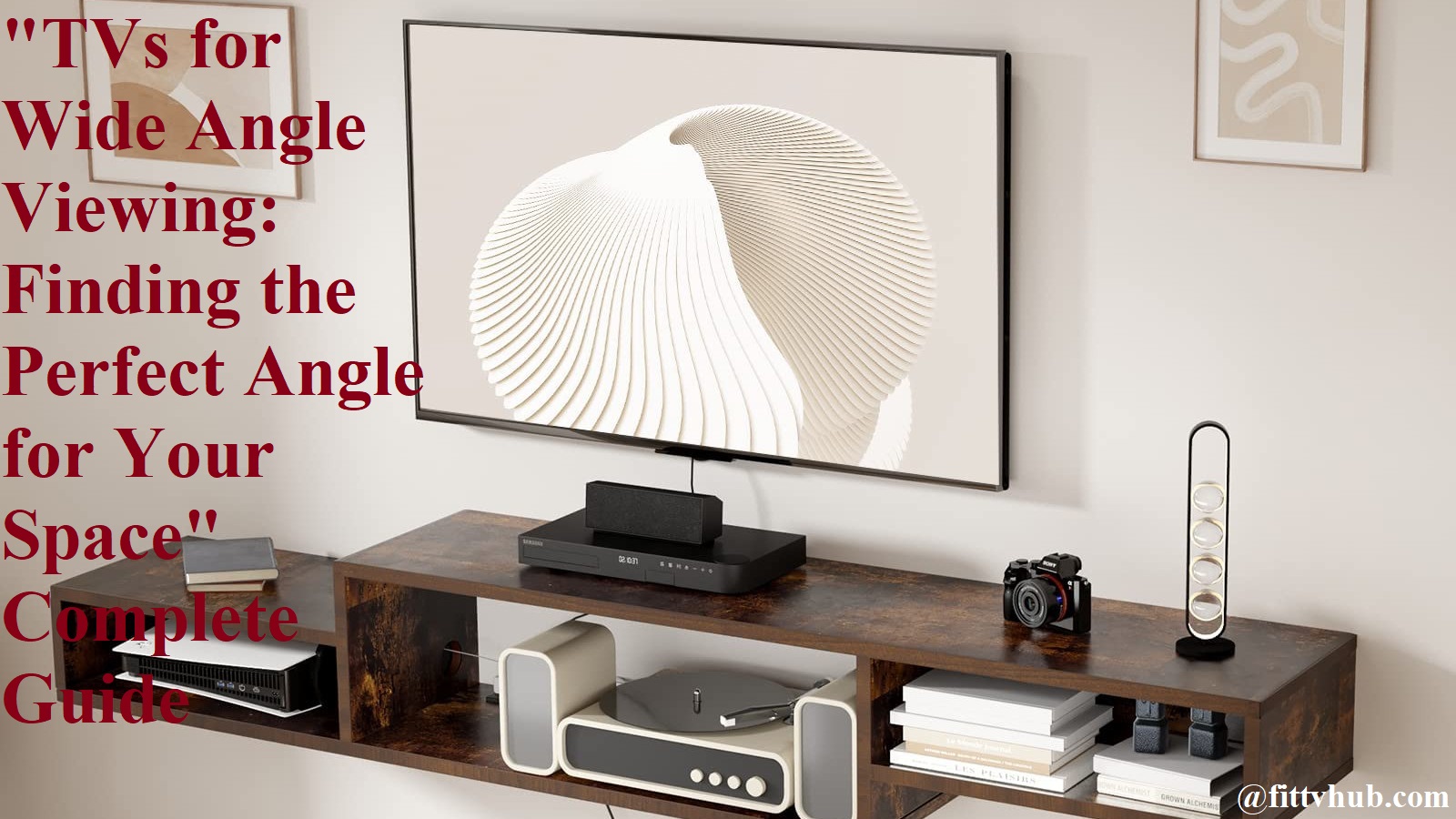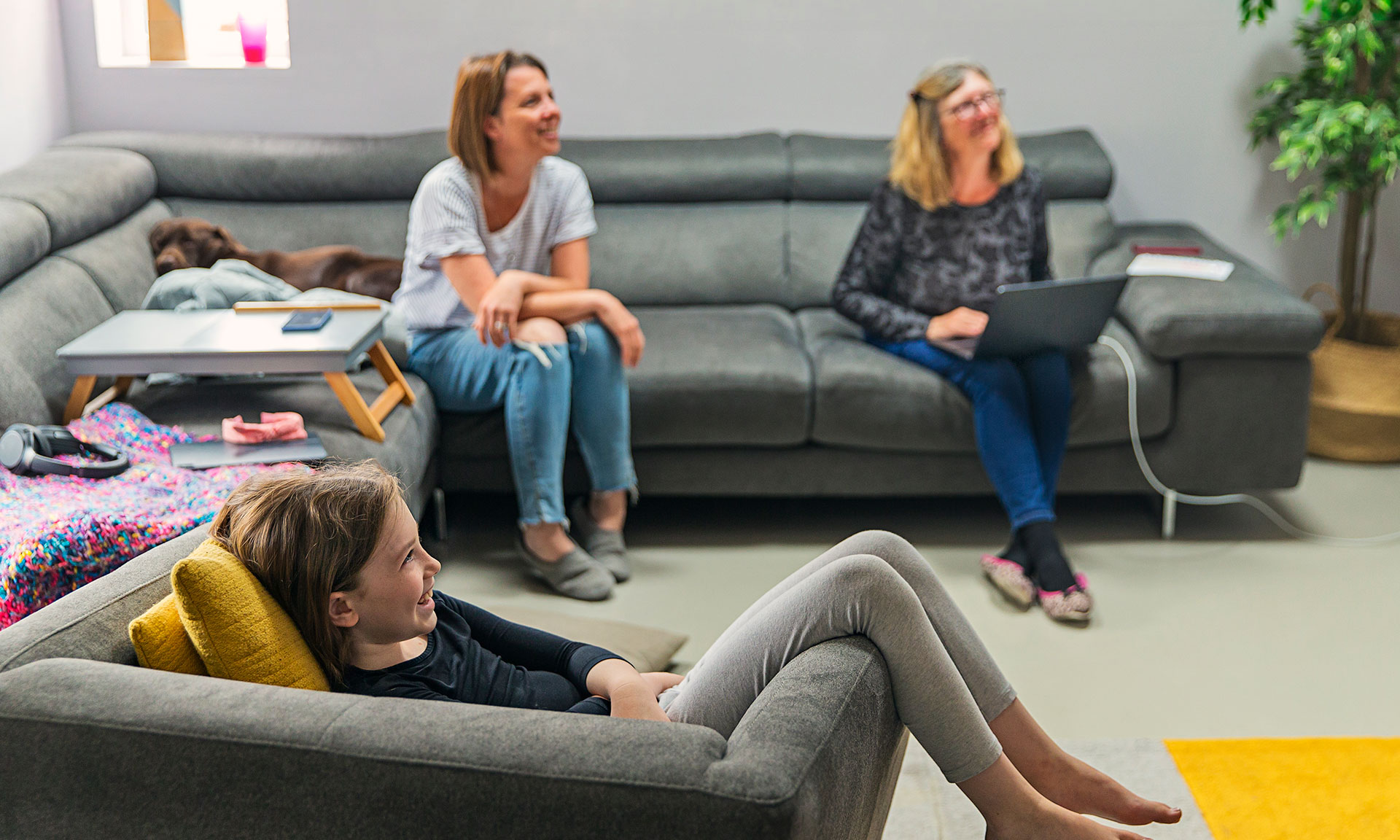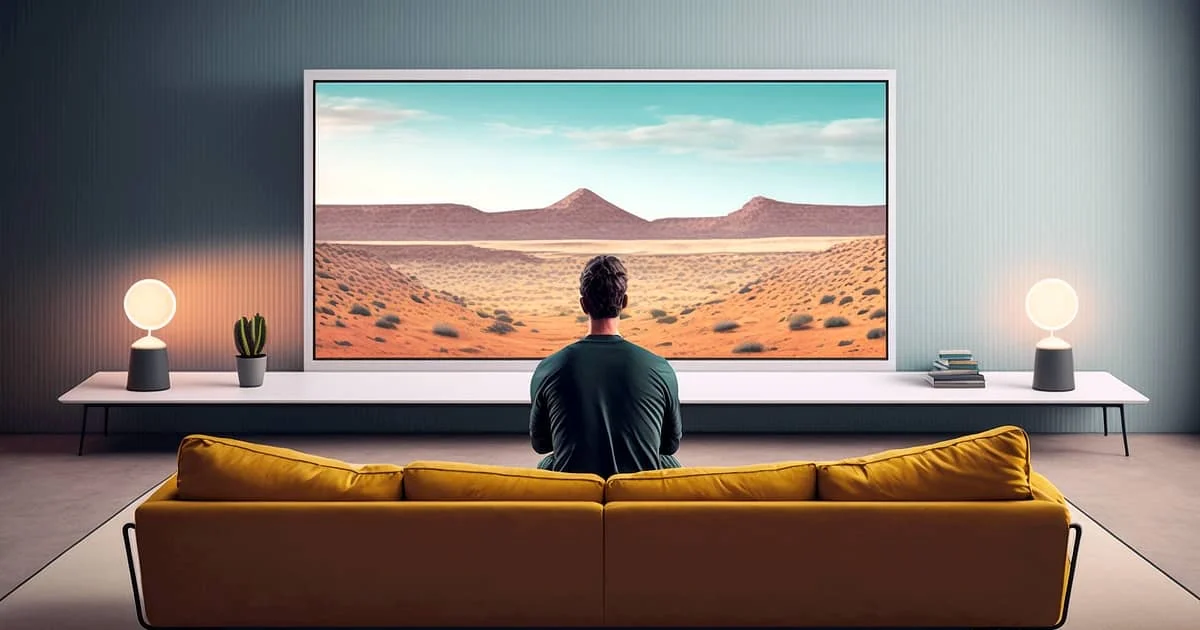Are you searching for the perfect TV to match your space and viewing needs? Look no further!
This guide will provide you with all the information you need to find the right TV with a wide angle viewing feature. With our tips, you can enjoy a cinematic experience in any room.
The ability to watch television from anywhere in a room has been made possible by the introduction of advanced television technology. With wide angle viewing, consumers can now enjoy their favorite shows at a much wider angle than was previously possible. From the comfort of any sofa, chair or bed, they can experience the brilliant clarity and color of a wide-screen format.
However, it is important to pay attention to several features that make a difference when selecting the best TV for your space. This guide will take you through all of them in considerable detail so that you are sure to get the perfect viewing angle for your space.
Topics for discussion include screen size, display technology, intelligent features, HDR support and more — we’ll explore all of these considerations in order to help you understand what makes for an excellent choice when selecting your perfect wide-angle viewing TV.
Explanation of the topic
The right television can complete your home entertainment set up, but how do you know which model is the best fit for your space? An important factor to consider is its angle of view, as this determines how far away from the screen you can sit and still have a good experience. This guide will help you understand what to look for in a TV for wide angle viewing, giving you all the information you need to make an informed purchase.
Modern televisions are designed with innovative technology which allows them to maximize their wide viewing angle. The most important features are an IPS (In-plane switching) panel or FALD (full array local dimming) backlighting. Both of these technologies provide great viewing experiences when sitting at any angle, allowing the picture quality to remain crisp and vivid even when sitting off-center or at wider angles.
In addition to IPS and FALD panels, there are several other features you should consider before selecting a TV for wide angle viewing:
- Size/type of display: Larger TVs offer improved image quality with wider angles of view; LED televisions feature truer colors and higher resolutions than LCD models; OLED TVs offer superior contrast ratios with wide angles.
- Resolution: The higher the resolution (measured in pixels), the greater clarity and detail there will be even from wider angles; 4K resolution is recommended for the best performance.
- Panel refresh rate: A higher refresh rate will ensure smoother motion across all angles; look for TVs that support at least 120 Hz or better rates.
By taking these key points into account when selecting a new television, it’s easier to find one that suits your needs and offers optimal performance regardless of where you choose to watch it from. Making sure your chosen model offers excellent visuals even from off-angle perspectives will guarantee great entertainment experiences no matter where you’re seated in your home space.
Importance of finding the perfect angle for wide-angle viewing
When selecting a television for your home, one of the most important considerations is the angle from which you will be viewing it. Wide-angle viewing ensures that everyone in the room is able to enjoy a clear and consistent viewing experience no matter where they are sitting. It doesn’t matter whether you have an especially large living room or just need to accomplish this in a small apartment; there are several ways to ensure you get the perfect angle for wide-angle viewing.
Taking some measurements beforehand can help you select a television size which will be appropriate for your space. When measuring, start from both sides of the ideal view point for standard seating distances—between six and eight feet away from your television set—until walls or furniture would obstruct your view and make note of each measure throughout the space. You will also want to take into account any furniture pieces that may block direct sightlines when finding the perfect angle for wide-angle viewing.
In addition to visual obstructions, pay attention to potential reflections and glare on your TV screen. Taking into consideration both natural or artificial light sources as well as interior design elements such as curtains, window coverings and other reflective materials can help prepare you in finding what type of equipment—such as a good quality anti-reflective filter—may be needed when cycling up best angle viewer tv sets . Any glass surfaces around should also be taken into account if they might reflect light onto the TV surface itself.
Overall, having an appropriate setup with seating locations in mind helps create an optimal experience with minimal distractions when it comes to wide-angle viewing. While it may seem daunting at first, by taking detailed measurements ahead of time along with making careful adjustments within its environment , one should have no problem creating an ideal scenario for displaying content filled with beautifully crisp angles no matter what size TV set is used .
Factors to consider when choosing a TV for wide-angle viewing
When selecting a TV for wide-angle viewing, several factors must be taken into consideration. Although resolution, picture quality and sound are also important considerations, the field of view and LCD panel technology are two of the most important aspects to consider when choosing a TV. Additionally, it is important to be aware of the various types of LCD panel technology available so that you choose one that can produce an optimal picture with a wide-angle view.
The Field Of View: The field of view (FOV) refers to the amount of area visible on the screen when viewed from different angles; however this feature can vary depending on LCD panel technology. Generally, high-end displays featuring LED backlighting or edge LED backlighting technologies tend to exhibit wider FOVs than standard LCD displays or those equipped with CCFL backlighting options. For TVs intended for use in large spaces where you will be watching from multiple angles and a wider field of view is desired, opting for a model equipped with LED or Edge LED backlighting is recommended.
LCD Panel Technology: modern televisions largely utilize either In-Plane Switching (IPS) or Vertical Alignment (VA) panels for their displays. Typically, IPS panels offer superior off-axis viewing compared to VA panels; making them more suitable options for wide viewing angles as they will produce better picture quality regardless of where you are seated in the room. Additionally, some models may be equipped with local dimming capabilities which will help reduce light bleed and further increase image clarity when watching at extreme off-axis angles.
Screen size
When choosing a television for wide angle viewing, screen size is an important factor to consider. Generally speaking, the bigger the screen size, the less likely you are to notice any picture distortion when viewing from the side. The wider the angle of view (how far off center you can look without noticing distortion), the better suited it is for larger spaces with multiple viewers. It’s best to go for screens over 65 inches if possible. Additionally, consider what type of television display to get in order to make sure that everyone has an optimal viewing experience from whatever angle they choose.
When choosing a display technology, it’s recommended to opt either for an OLED or LCD television as these types give a wide viewing angle with minimal distortion. OLED TVs have superior contrast ratios which help them deliver brighter visuals even at wider angles, while LCD TVs have improved backlighting which makes it easy on the eyes when watching from off-centre angles. Also important to note is that OLED TVs tend to be more expensive than its LCD counterparts, but usually offer much higher image quality and a far better overall viewing experience compared to traditional LCD displays in general.
Viewing distance
When selecting a TV for wide angle viewing, the most important factor to consider is the optimal viewing distance. This depends on both the size of the TV in question, and the size of the room in which it is going to be placed. The suggested viewing distance for any specific size and model of television can typically be found in its specifications.
Generally speaking, if you want to get an immersive experience with your flat-screen TV, it should ideally be one to two times your seating distance away from you. For example, if it is at least 8 feet from where you are sitting, then your flat-screen should not exceed 80 inches diagonally. Keeping this in mind will ensure that your back rows won’t miss out on any of the action or details present on the screen.
It is also important to note that higher resolution TVs tend to look better when viewed from farther away because their finer details can more easily fill up a larger space compared to standard resolution TVs which depend more heavily on close-up viewings for appreciation due to poorer image quality up close. Speaking with a professional at a home theater store may also help determine what size monitor fits best with your space constraints as they often have access to catalogues comparing different models side by side based off measurements and ratings by other customers who have owned them previously and provided feedbacks on their experiences with them as well.
Screen resolution
When shopping for TVs, one important factor to consider is the screen resolution, or the number of pixels on a display. Resolution is an important metric because it tells you how sharp your image will be on the screen. High resolution TVs have more pixels and higher pixel density, which means clearer and crisper images, as well as better color accuracy and contrast.
The most common resolutions available on televisions today are HD (high definition), UHD (4K ultra high definition), and 8K UHD (8K ultra high definition). HD TVs have 720p or 1080p resolutions and are generally cheaper than their 4K counterparts. However, lower resolution TVs are quickly falling out of favor with consumers who want a picture quality that meets the expectations of their streaming services and gaming consoles.
On the other hand, 4K ultrahigh-definition televisions provide four times the resolution of a HD set, with over 8 million pixels per picture frame. This provides stunning clarity, improved colors and contrast levels that make your viewing experience much more immersive than an average HD TV can deliver. 8K UHD offers even higher levels of image detail with 16 million pixels per frame — it’s best reserved for large displays right now due to its extremely high price tag.
Panel technology
When it comes to picture performance and clarity, picking the right panel technology for your television can be the difference between a great viewing experience and disappointment. To help you choose the best screen for your viewing needs, it’s important to understand the different types of display panels available and how they affect picture quality.
Twisted Nematic (TN): TN panels are among the most common used in HDTVs today. They offer moderate image quality with fast response times that make them ideal for action-packed gaming or sports viewing. Unfortunately, TN displays often have narrow view angles and poor blacks levels that become washed out when viewed from an angle.
In-Plane Switching (IPS): IPS panels offer wide-angle viewing with greater color accuracy than TN screens at any angle, but response time is relatively slow which causes noticeable blurring in fast action scenes or games. These displays also tend to be more expensive than their TN counterparts.
Vertical Alignment (VA): VA screens blur less than IPS models making them better suited for sports/gaming viewers but colors can become inaccurate as viewers move off axis – so they blend the best of both worlds but don’t quite match either IPS knowledge in terms of color accuracy or TN in terms of response time.
Viewing angle
When shopping for a TV, viewing angle is an important factor to consider. Basically, the viewing angle is the maximum angle at which the picture on your television can be seen from. A TV with a wide viewing angle allows you to see the picture from more parts of your room with minimal loss of color or clarity. This means that if you are having people over for a movie night or just want to enjoy some television in larger groups, wide angle views are extremely satisfying in these contexts.
In order to determine a good viewing angle for your space, it’s important to measure out how much room you have and also note where you would like viewers to be seated. It’s also helpful to look up the specifications of various TVs; most manufacturers will provide information on their products’ optimal viewing angles.
To ensure optimal performance, you should make sure that the distance between you and the TV is at least three times its width — this helps ensure clarity and keeps any unwanted distortion out of sight. When it comes time to purchase TVs with higher degrees of wide-angle viewing capability, be sure to research reviews and product specs online for more guidance. Investing in a few well-placed surround sound speakers can also contribute glorious sound quality no matter where viewers choose sit!
Tips for setting up your TV for wide-angle viewing
Achieving an optimal viewing experience requires more than just picking out the right television, it also requires setting it up properly. Fortunately, with a few simple steps and tips, you can get the perfect angle for any size room.
Firstly, you need to make sure that your TV is at eye level. Most people place their TVs higher on the wall than necessary, so make sure yours is placed in a position that doesn’t strain your neck. It’s also important to consider how far away from the wall you intend to sit. If you’re too far away from the TV, then it will be hard to take in all of the available content and enjoy wide-angle viewing experience.
For smaller rooms, retractable swivel mounts are often your best bet as they can be adjusted depending on how close or far away one wants to sit from the TV. Corner mounts can also be beneficial for smaller rooms as it allows for wider angle viewings. No matter which mount you choose – ceiling mount, wall mount or even desktop – ensure that it has enough weight capacity for your chosen television set and high-quality support brackets thickness in order to ensure maximum secure and stability of the Television set.
Elsewise if using traditional stands then consider investing in ‘V’ shaped or hangman stands as they are ideal lightweight solutions while providing optimal strength, quality adjustment capability and stability when used with bigger screen sizes. At times however adding a swivel mechanism may be required accompanied by built-in soundbar bracketing solutions so that both soundbar and television set can be secured without much hassle of separately mounting them again.
For larger rooms though ceiling mounting may provide better viewing angles as one can adjust accordingly when more people want seating options available at different angles.
When everything is ready check for loose wires lurking around near electrical components like power outlets which could prove dangerous due to short circuit if not managed properly. Once all safety checks have been followed then its time to appreciate this newly setup angle optimized space!
Proper placement
Proper TV placement is key to achieving the perfect viewing angle. Whether you’re talking about flat panel, projection or rear-projection configurations, where you place your TV is important. To get the maximum enjoyment from your television, it’s essential to position it in a way that offers the best picture and sound quality. Below are some tips for choosing the ideal location for your television:
Measure twice and locate securely: Before choosing a spot for your TV, take time to measure twice and consider potential locations deliberately. Don’t rush installation; it pays to take your time in order to make sure that you get it right the first time.
Wall mount or set on stand: When reviewing options for setting up your TV, decide between wall mounting and a stand arrangement. Wall mounts free up floor space while stands make moving easy if necessary; both provide easy access to video equipment and cables.
Optimization of space: Consider how much furniture you can plan around the positioning of your television; sometimes an angled stand will reduce natural optically losses due to seating locations or light sources while still allowing viewers in different areas of a room equal clarity when watching programming content.
Angling towards viewers: When positioning a flat screen model TV, be aware of distance issues when angling towards viewers located at both ends of the room — pinpoint accuracy isn’t always needed! Aiming at more than one viewer might require adjustment for optimum picture quality depending on available angles and proximity distances concerned. Proper angles can also help reduce eye fatigue during extended viewing periods by eliminating reflective glare coming off its glossy surface.
Mounting options
When it comes to positioning a television in your living space, there are several different mounting options available. Deciding which one works best for your particular room will depend on things like the size of the TV, the amount of light present in the room, and what kind of features you’ll be utilizing with your television.
Wall-mounting is useful option if you’re looking to conserve space or you don’t have much room on your floors or tables. Most wall mounts come with an adjustable tilting mechanism that allows you to get the perfect viewing angle without having to move furniture around. Wall-mounting can also make it easier to access ports and cables on the back of a flat screen TV that may otherwise not be as readily accessible if a TV stand was used instead.
For larger TVs, especially those 65+ inches, many people opt for a stand that has built-in shelves or drawers for easy storage access. This is great for stowing away remotes and other items since it requires no additional furniture in order to access them. The downside is that stands can take up quite a bit of floor space depending on how large they are and since most do not offer any flexibility when it comes to adjusting angle, which can cause visibility issues from certain points in the room if set up too far away from seats or couches.
The last common way to set up TVs nowadays involves using any wall studs provided in residential construction these days along with special brackets specifically designed for this function. This type of setup offers convenience when accessing ports and wires but usually provides less options when trying to manipulate viewing angle given the underlying surface being flat walls rather than tables or stands with included tilt features.
Conclusion
In conclusion, the perfect angle for wide angle viewing depends on your space constraints and personal preference. It is important to take into consideration factors such as the distance from the tv, position of windows and lights, available space for seating, room philosophy, and the position of your furniture when choosing the optimal viewing angle for your tv.
While there are many benefits to having a wide angle tv set, it can also be a source of frustration if not properly considered from all angles. Take time to experiment with different angles to find what is best suited for you. With careful thought and planning, you are sure to have an enjoyable experience watching movies and tv shows in your comfortable home setting!
FAQs
What is a good TV for wide viewing angle?
A TV with an IPS (In-Plane Switching) or an OLED (Organic Light Emitting Diode) panel is generally considered good for wide viewing angles.
How do you determine the viewing angle of a TV?
The viewing angle of a TV can be determined by measuring the angle at which the screen becomes difficult to see clearly from the sides or above/below.
Does OLED have good viewing angles?
Yes, OLED panels have excellent viewing angles due to their ability to produce deep blacks and maintain color accuracy at wide angles.
What size TV is best for your eyes?
The size of the TV does not necessarily affect eye strain or discomfort. However, it’s important to consider the distance between the viewer and the TV, as well as the quality of the picture and lighting conditions in the room.
What is the best TV to eye distance?
The recommended TV to eye distance varies based on the size of the TV and the resolution. As a general rule, a distance of 1.5 to 2.5 times the diagonal screen size is a good starting point.
Which is better OLED or QLED?
OLED is generally considered to have better picture quality due to its ability to produce deeper blacks and better contrast. However, QLED is generally less expensive and may be more suitable for brightly lit rooms.
How far should I sit from a 55 inch TV?
The recommended viewing distance for a 55 inch TV is typically around 7 to 9 feet, or 2.1 to 2.7 meters.
Is QLED TV better than LED?
QLED is a type of LED TV that uses quantum dot technology to produce a wider color gamut. While QLED TVs can produce brighter colors, they may not have the same deep blacks and contrast as OLED TVs.
What is the best TV viewing distance height and angle?
The best TV viewing distance, height, and angle vary based on personal preference and the specific TV. However, a comfortable viewing distance is typically 1.5 to 2.5 times the diagonal screen size, with the TV positioned at or slightly below eye level.
What size TV is best for a 10×10 room?
For a 10×10 room, a TV with a screen size between 43 and 55 inches is generally considered a good choice. However, the optimal size depends on the viewer’s preference and the distance between the TV and seating area.
See Also-
- Best rolling tv stands
- Best smart tv for seniors
- Best 90 inch tv
- Best 55 inch TV under
- Best 82 inch TV

